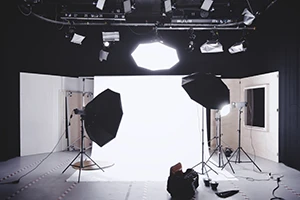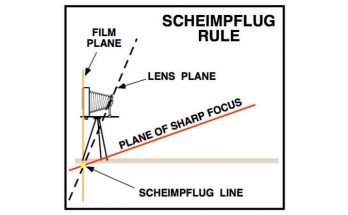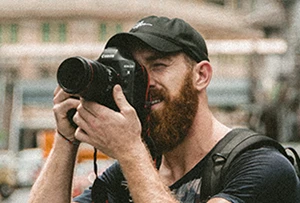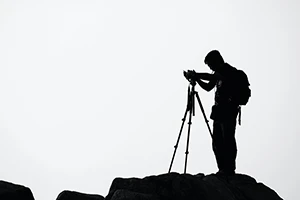
Product photography is an exciting and potentially lucrative career path. But if you lack the right tools
and environment, it can be difficult to produce high quality images. Fortunately, there are ways to get
around this problem—and most of them require little more than some practical creativity.
As a product photographer, it’s your responsibility to ensure that your client’s products look their very
best. Understanding the importance of light, perspective, and color compatibility can help you develop a
sharper eye for the photographic potential of even the most mundane object, enabling you to churn out beautiful photos every time.
You don’t need an unlimited bank account to take stunning, industry-grade product photos. But you do
need some creativity and resourcefulness. Take a look at some of the most innovative yet easy-to-execute hacks for snapping professional-looking product photos using nothing but your camera skills.

Experiment With Different Angles
The right angle has the potential to either make or break your product image. Every angle brings out a
different side of an object, either emphasising or understating various features. Knowing this, you can
transform the appeal of your client’s products by trying out various angles to show their best side.
Instead of just pointing and shooting a product head-on, try a variety of different focal points and angles
to see which ones make it look its best. The right angle isn’t always the most obvious one. So, if the
image is not working for you, keep trying different angles until it does. Also, do not underestimate the power of props. As evident in the photo above, even the most unexpected objects can make an image more interesting.
Understand Natural Light
Natural light is a massively underutilized tool for taking your product photography to the next level. And
to make it even better, this is a resource you can get for free every day. If you know when to catch it.
Sunrise and sunset are widely considered the best times to capture both people and objects in natural
light. Nighttime is obviously too dark, and morning-to-afternoon hours tend to be too bright and harsh,
especially for product photography, which often uses reflective surfaces.
Cultivating deeper knowledge about natural light is the best way to harness this powerful, free tool. Use
it to enhance your images and make them appear clearer and more illuminated.

Use LEDs For Creative Lighting Set-Ups
LEDs are much more affordable than traditional studio lights. However, they can be just as effective for
introducing new tones and hues to your product’s lighting setup.
These types of lights are also super versatile and come in an enormous range of colors. This allows you
to adjust the mood of your product photos with ease. You can opt for multiple color overlays that create
a multifaceted effect or subtle monotones that hint at creative atmospheres.
Follow Creative Product Photographers Online
This one is not so much a hack as it is a tip. Following other product photographers who inspire you
online can expose you to so many exciting, fresh ideas to take your work to the next level.
Many product photographer influencers share expert-worthy tips and tricks for their followers to use,
helping you develop a wider perspective of what’s possible when you put your mind to it. Even just
looking at trends and hot techniques can inspire you to apply more ingenuity to your work.

Use Fishing Line
If you want to create the illusion of a product suspended in the air, look no further than your garage or
the local hardware store. This near-invisible but surprisingly strong string is the perfect tool for hanging
products up, giving them the surreal appearance of floating in mid-air.
All that’s needed to create this enigmatic and impactful look is some fishing line and something to tie it
to from above. Then simply attach the string to your product and capture it in its illusory, floating state.
Make Your Own Reflector
Making your own light reflector is much easier than you’d think, and it’ll save you a lot of cash. All you’ll
need is some aluminum foil, scissors, duct tape, and cardboard or foam board.
Simply cut your board into a large circle (or any size/shape that suits your needs exactly) and cover it
with aluminum foil. Tape the ends to seal them, and you have your own custom-made light reflector
that can be an additional source of light at any product shoot you work on.
Invest In Quality Editing Programs
Any photographer knows that quality editing tools are crucial for producing quality photographs. But
many of them can be expensive and inaccessible. Fret not, for an investment does not need to be financial. Instead, you can invest your time in getting to know these highly rated but affordable options:
● Pixlr
● GIMP
● Fotor
● Canva
These tools may not be of the same caliber as the almighty Adobe Photoshop, but they’ll certainly
elevate your post-production process and help you create some stunning, client-worthy content.

Being Creative Makes You A Better Photographer
As convenient as it can be to have a whole studio packed with world-class photography equipment,
having to create your own on a budget can make you more adaptable.
Adaptability and creative vision are both highly important for any creative professional. Using these
hacks, as well as coming up with your own along the way, can evolve your skills as a photographer and
allow you to see things in ways you never could have dreamed of before. You can even build your own
portfolio to show off your ever-growing skill set and update it with every shoot. This will also give you a
clear idea of how you’ve progressed and provide potential clients with an overview of your best work.
Who knows? The ingenuity needed to produce professional-level product photos on a shoestring budget
might be the very thing that catapults you into a successful photography career in the e-commerce
industry—or beyond.
Shoot For Success
It’s no longer necessary to have a professional studio to take professional-looking photos. Passionate,
creative, and resourceful photographers from all over the world have developed their own techniques
for achieving industry-level images without needing thousands of dollars of equipment.
By learning about natural light, choosing interesting props, experimenting with different types of angles,
and using a quality editing program, you can use what you have to find success as a professional product
photographer.




